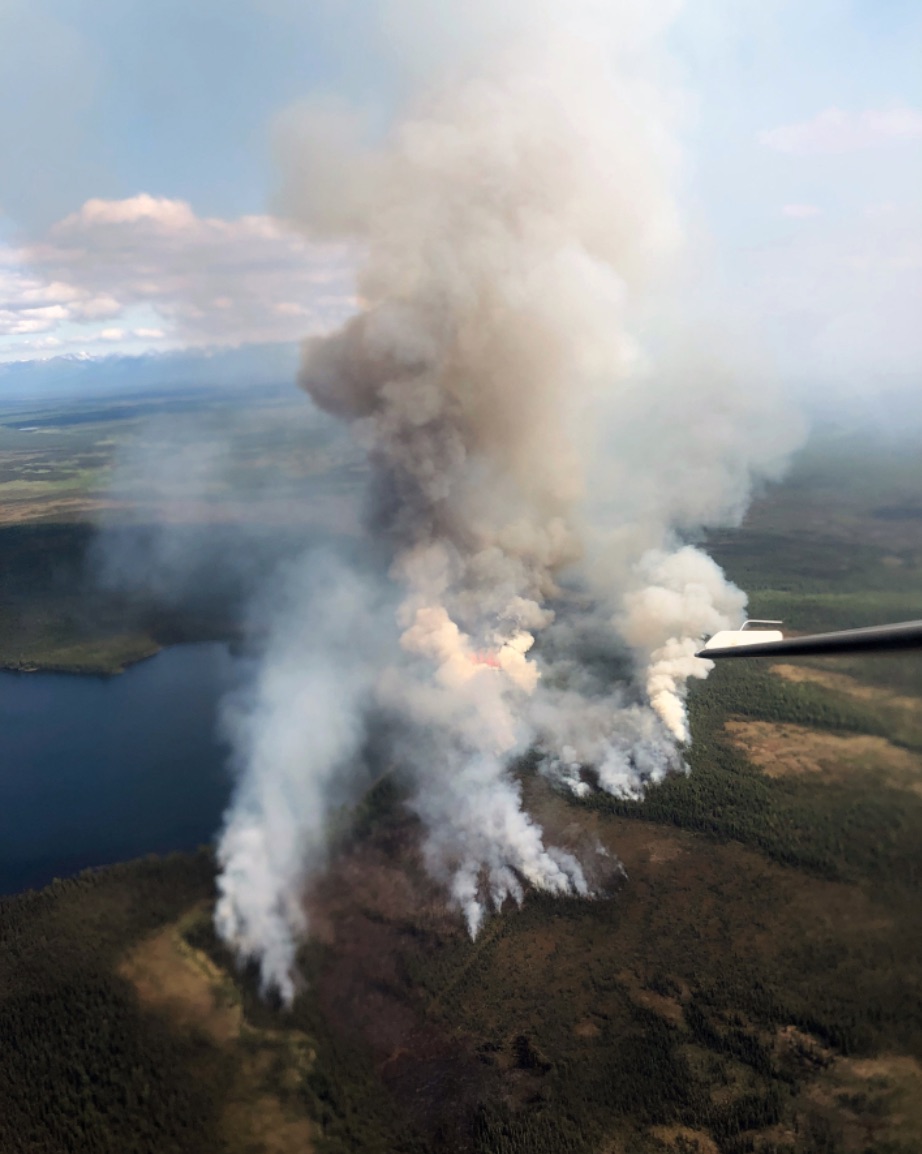The Loon Lake Fire burning in the Kenai National Wildlife Refuge became more active Sunday, according to the Division of Forestry, which has received numerous calls from concerned residents who could spot a smoke column from the Sterling Highway and elsewhere.
The lightning-ignited fire grew from six acres Sunday morning to about 150 acres by 5 p.m.
The fire was reported at around 8 p.m. on Saturday and is burning in dense black spruce about 1 mile from where the Swan Lake Fire was started by lightning on June 5, 2019.
The Loon Lake Fire is burning in a remote area of the refuge about 10½ miles northeast of Sterling and is not a threat to the community, or any structures, the division said.
An air tanker based in Palmer dropped water on the fire and two water-scooping aircraft based at the BLM Alaska Fire Service continue to bomb the fire with water. A helicopter from the Kenai/Kodiak Area Forestry station has also been making water drops on the fire and another helicopter has been hired for additional bucket work.
Refuge managers have given the Division of Forestry permission to drop retardant around the fire to slow its spread and give firefighters on the ground a chance to attack and build containment lines.
The 17-person Gannett Glacier Type 2 Initial Attack Crew is being helicoptered into the fire and was due to arrive on the wireline by 7 p.m. Sunday. Two more hotshot crews – the Pioneer Peak Hotshots and Midnight Sun Hotshots – have been ordered and will arrive at the fire on Monday.
Meanwhile, the wildfire near the Salcha River in the Interior was 60 percent contained by firefighters on Sunday – an increase of 30 percent from Saturday. Crews have started gridding the interior of the fire for any hot spots that need to be extinguished to achieve full containment.
So far in 2021, there are 169 wildfires that have burned 7,443 acres. Four wildfires were reported on Saturday and there are 26 active wildfires as of this writing, but just three of them are staffed, while the others are being monitored. According to the division, 145 of the fires this year were human-caused.
A burn-suspension is in effect for the Tok area, due to high wildfire danger, increased human activity, and limited initial attack resources. All burning permitted by small- and large-scale burn permits is banned during a burn suspension, including outdoor debris/brush burning and the use of burn barrels.
Small campfires of less than 3 feet or less in diameter with flames lengths no higher than 2 feet are still allowed during a suspension, with extreme caution advised.

As long as the greenies work to prohibit responsible management of lands, the wildfires will continue.
How do we get a check to you?
Must Read Alaska, 200 W. 34th Ave. #220, Anchorage, AK 99503.
Thank you!
Omg not another swan lake fire again
God bless those firefighters
I would have thought that thanks to the efforts of “fire officials” over the last two years there isn’t much left to burn north of the Sterling Highway. Although I suppose that one way to reduce fossil fuel use in Anchorage is to make the place uninhabitable for humans.